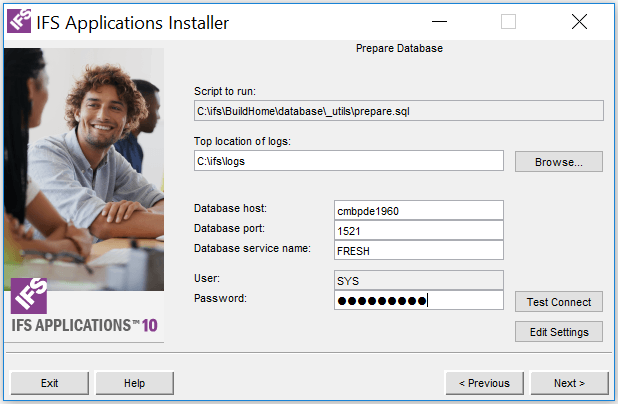| Foundation1 / Installation Guide / References / Ifs Applications Installer / Ui Reference Itd / Prepare Db Itd / File And Database / |
In the Prepare database form you execute a predefined script for preparing your database for IFS Applications.

A predefined script to prepare your database is selected.
| Parameter | Description | Alternatives/Suggestion |
|---|---|---|
| Script to run | Just for verification, the prepare.sql script is displayed. | NA |
| Top location of logs | Top location for output logs during the execution,
e.g. Windows: D:\MyWorkSpace\logs Linux/Unix: /home/ifs/logs |
NA |
| Parameter | Description | Alternatives/Suggestion |
|---|---|---|
| Database host | On which server is the database located | NA |
| Database port | Database port | Normally 1521 |
| Database Service Name | Name of the database service | NA |
| Parameter | Description | Alternatives/Suggestion |
|---|---|---|
| User | Must be SYS when you are prepare your DB for IFS Applications | SYS |
| Password | User password | NA |

You manage to connect to the database.
You can change the value in the Value column. Depending on the definition, value can be as free text or to be selected from a list. You save the values by pressing Save settings button. If Save settings button is disabled, you don't have write privileges.
A popup will inform you that you have to save the file in your version control system if you want to reuse changed values in future deployments.Note! No space character allowed in entered values.
 |
When the following conditions are met, the Installer will jump to the
next form when you click Next:
|
 |
To close the program click Exit It's not possible to go to the next step if you haven't written values in all fields. Also, the installer prevent you from continuing if it is not possible to connect with database using the given logon parameters before. |